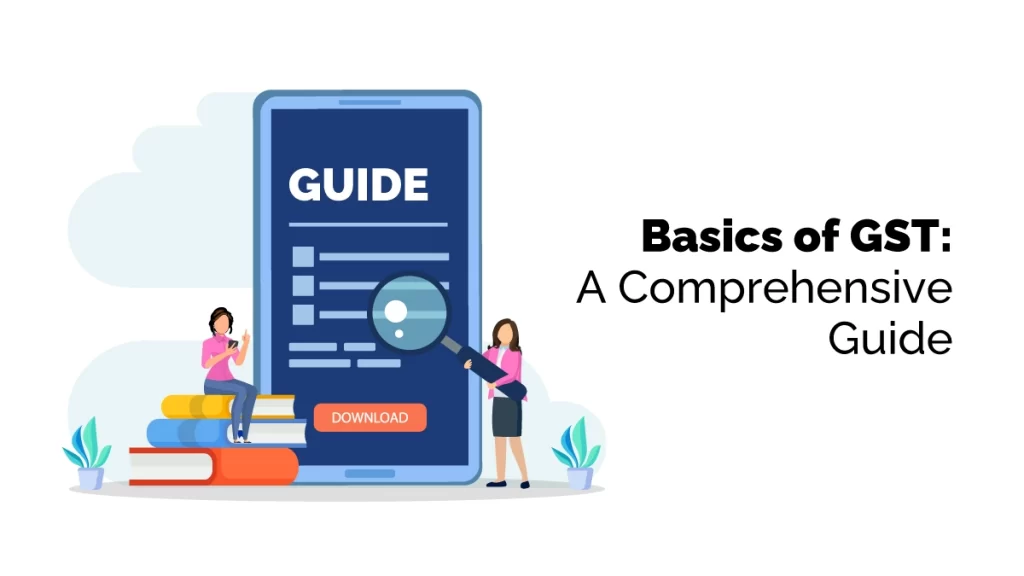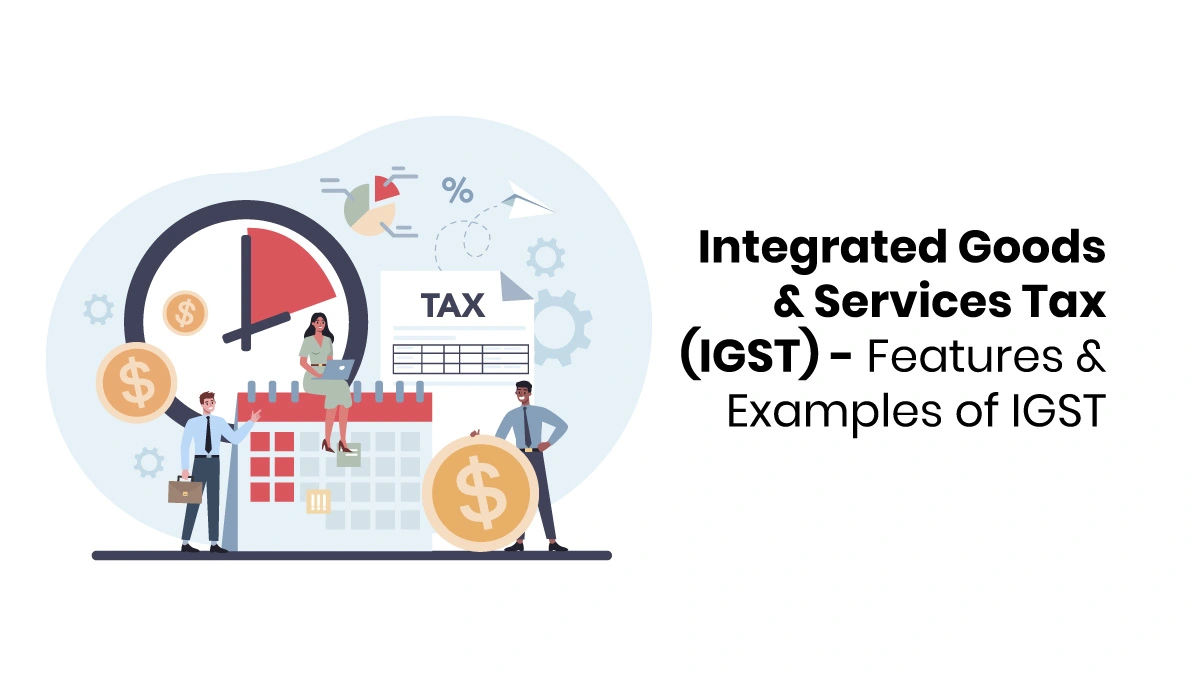Goods and Services Tax (GST) is a considerable tax reform in India’s indirect tax structure. The indirect tax system in the past comprised separate laws at the Centre and State levels. This fragmented structure increased goods costs and created a more complex taxation system.
The introduction of GST as a single, unified tax became imperative to simplify the tax regime and eliminate the cascading effect of multiple taxes. This new tax system encompasses the levy on the supply of goods, services, or both, with concurrent jurisdiction held by the Centre and the States. By implementing GST, the aim was to streamline the tax structure, enhance efficiency, and promote ease of business in the country.
Understanding the Basics of GST
How Has GST Helped the Economy?
One of the key ways in which GST has positively impacted the economy is by eliminating the cascading effect of taxes. The previous tax system had a significant issue where goods and services already taxed were subjected to further taxation at subsequent supply chain stages. This created a burden of tax-on-tax, increasing costs and complexity. However, only the value added at each supply chain step is taxed with the implementation of GST. This means the tax is levied only on the additional value created, eliminating the cascading effect and reducing the overall tax burden.
Additionally, GST has played a vital role in removing tax barriers between states, fostering a more seamless and efficient inter-state trade environment. Previously, businesses encountered diverse tax rules and compliance procedures when operating across state borders, hindering the free flow of goods and services. GST harmonised tax regulations nationwide, ensuring consistency and simplifying compliance requirements. This has streamlined the movement of goods, stimulated trade, and facilitated economic growth.
History of GST in India
Implementing Goods and Services Tax (GST) in India on July 1, 2017, was the culmination of a process that spanned several decades. The GST committee was established in 2000, and in 2004, it determined the necessity of introducing a new tax system.
Before the introduction of GST, India had a complex array of indirect taxes levied at various stages of the supply chain. These included sales tax, entertainment tax, service tax, customs duty, excise duty, and more. The separate collection of taxes by the states and the central government led to a high tax burden for businesses and individuals.
One of the challenges of the pre-GST tax system was the cascading effect, also known as the Tax on Tax. Manufacturers and suppliers had to pay taxes on inputs, including taxes paid at earlier stages. This cascading effect increased the cost of goods and services and made the tax structure cumbersome.
The introduction of the Goods and Services Tax addressed these challenges by abolishing the multiple indirect taxes and bringing them under a unified tax regime. GST replaced the previous tax system with a single tax framework, streamlining the tax structure and simplifying tax payments.
New Features Under the GST Regime
Implementing the GST regime brought forth a range of new systems and processes to enhance the ease of tax calculations and filings for businesses. These features were designed to simplify the tax compliance process and give businesses a more efficient framework for managing their tax obligations.
E-Way Bills Under the GST Regime
An e-way bill is an essential electronic document introduced under India’s Goods and Services Tax (GST) regime. It is a mandatory requirement for registered persons involved in the movement of goods exceeding the value of Rs. 50,000, whether within or outside a state.
Key details included in an e-way bill are as follows:
- Goods Details: It comprises information about the goods being transported, including the name of the supplier and recipient.
- GST Identification Numbers (GSTIN): The GSTIN of both parties involved in the transaction is mentioned to ensure proper identification.
- Invoice Information: The e-way bill incorporates the invoice number and date of the transaction.
- Goods Value: It includes the value of the goods being transported.
- Delivery Location: The place of delivery, specifying the destination of the goods, is mentioned in the e-way bill.
- Transporter Details: Information about the mode of transport, such as the vehicle number and transporter ID, is provided.
- Expected Delivery Date and Time: This indicates the anticipated arrival time of the goods at the destination.
Implementing the e-way bill system aims to establish comprehensive documentation and tracking of goods transportation, thereby curbing tax evasion and ensuring compliance with GST regulations. It simplifies the movement of goods by consolidating all necessary information into a single document.
To generate an e-way bill, registered individuals can access the GST portal and follow the prescribed procedures. Once generated, the e-way bill must accompany the goods throughout their transportation journey.
The e-way bill system introduced under the GST regime has greatly facilitated the tracking and monitoring of goods transportation, contributing to increased transparency, reduced tax evasion, and streamlined compliance with GST regulations.
E-Invoicing System
Introducing the e-invoicing system under India’s Goods and Services Tax (GST) regime has revolutionised how invoices are generated and managed. This electronic invoicing system enables businesses to create invoices in a standardised electronic format, ensuring their authenticity and accuracy through the validation of the Goods and Services Tax Network (GSTN).
Under this system, businesses must generate invoices on their internal systems, such as enterprise resource planning or accounting software, following the specific format prescribed by the GST council. These invoices are then uploaded to the GST portal, where they undergo validation processes. Upon successful validation, each invoice is assigned a unique Invoice Reference Number and a Quick Response code.
Implementing the e-invoicing system has significantly benefited businesses and the overall GST ecosystem. Streamlining the invoice generation process reduces errors and enhances compliance with GST regulations. The standardised format ensures consistency and accuracy in invoice information, making it easier for businesses to reconcile and validate their transactions.
Moreover, the e-invoicing system helps combat the duplication of invoices, reducing the incidence of fake invoices and fraudulent activities. It enables seamless integration between the supplier’s invoice and the recipient’s input tax credit, ensuring accurate and efficient matching of transactions.
Types of GST
In our country, the Goods and Services Tax (GST) system comprises four major types of taxes, each serving a specific purpose and jurisdiction:

CGST (Central Goods and Services Tax)
CGST is levied on the supply of goods and services within a single state. The revenue collected through CGST goes to the central government.
SGST (State Goods and Services Tax)
GST is levied on the supply of goods and services within a specific state. The respective state government retains the revenue collected through SGST.
IGST (Integrated Goods and Services Tax)
IGST is used for the supply of goods and services between different states. It is charged when goods and services move from one state to another.
The revenue collected through IGST is shared between the central and state governments based on predetermined rules.
UTGST (Union Territory Goods and Services Tax)
UTGST is applicable in the Union Territories of India.
Its application extends to the supply of goods and services within Union Territories.
The respective Union Territory administration retains the revenue collected through UTGST.
Who Needs GST?
GST has had a transformative impact on all stakeholders, particularly consumers, by lowering the overall cost of goods and services. Through reduced tax burdens on businesses, the savings are passed on to consumers, fostering increased affordability and purchasing power. This surge in consumer spending has become a catalyst for economic growth, driving various sectors forward.
The introduction of GST has also been advantageous for businesses. With the implementation of a unified tax system, the complexities and paperwork associated with multiple taxes have been streamlined. This reduction in administrative burden has allowed businesses to allocate more resources to their core operations, enhancing productivity and efficiency.
In addition to benefiting consumers and businesses, the government has experienced significant advantages from implementing GST. The consolidated tax structure has led to a considerable boost in revenue collection. The increased revenue has allowed the government to invest in public welfare initiatives and infrastructure development. These investments have contributed to the overall progress and development of the economy, fostering sustainable growth and prosperity.
Input Tax Credit (ITC)
Input Tax Credit (ITC) is a fundamental feature of the Goods and Services Tax (GST) system, bringing significant benefits throughout the supply chain. Under the GST regime, businesses can claim credit for the taxes they have paid on inputs or input services used in producing or providing goods or services. This credit can be set off against the taxes payable on the output supplies, reducing the final tax liability.
ITC eliminates the cascading effect of taxes, where taxes on inputs are levied at each stage of the supply chain, leading to tax-on-tax and increased costs. With ITC, businesses can claim credit for the taxes already paid, ensuring that taxes are levied only on the value added at each stage. This helps reduce the overall tax burden and promotes a more efficient and transparent tax system.
The availability of ITC encourages businesses to comply with the GST regulations and maintain proper records of input taxes paid. It incentivises businesses to source inputs from GST-registered suppliers, as only registered suppliers can provide eligible invoices necessary for claiming ITC. This, in turn, promotes a formal economy and discourages tax evasion.
Who can claim ITC?
Input Tax Credit (ITC) can be declared by businesses beneath the Goods and Services Tax (GST) system. To claim ITC, businesses must ensure that the raw materials, services, or capital goods they have purchased are used to further their business activities. Raw materials, services, and capital goods are eligible for ITC if used in the production, manufacturing, or provision of goods or services the business sells.
However, businesses must meet certain conditions, such as having valid tax invoices, receiving goods or services, and filing GST returns on time. Businesses can enhance their cost-effectiveness and operational efficiency by claiming Input Tax Credit (ITC), thereby reducing their tax liability. This, in turn, enables them to extend the benefits to their customers, fostering a more efficient and economically advantageous business environment.
Payment of GST
GST payment can be conducted through various methods, including both online and offline channels. Regardless of the chosen method, businesses need to calculate the tax amount paid after adjusting for input taxes per the Input Tax Credit policy.
To generate a GST challan, there are two options available. The first option is to generate the Challan without logging in. This can be done by visiting the following link: https://services.gst.gov.in/services/quicklinks/payments. Alternatively, you can go to the official GST portal https://www.gst.gov.in/, navigate to Services, then Payments, and finally click Create Challan to fill out the required fields and download the Challan.
The second option is to generate the Challan after logging into the GST portal. Upon logging in, you will find the option to create a challan on your dashboard. Fill out the necessary details and download the Challan.
Enrolling in a GST certification course can greatly enhance one’s proficiency in effectively managing GST accounting software for businesses. Finprov, a reputable institute, offers a comprehensive GST certification course that equips learners with in-depth knowledge of GST principles and practices backed by real-world examples. This course is ideal for graduates, Chartered Accountants, company secretaries, finance and tax professionals, and individuals seeking career opportunities.
The GST certification course provided by Finprov covers various topics, including the fundamentals of GST, Input Tax Credit, Composition Scheme, GST return filing, E-way bill, Time of Supply, Place of Supply, Reverse Charge Mechanism, and more. It caters to the learning needs of graduates and professionals looking to expand their expertise in accounting and finance. By choosing Finprov for your GST certification course, you gain access to quality education and valuable insights that are highly relevant to these domains.










